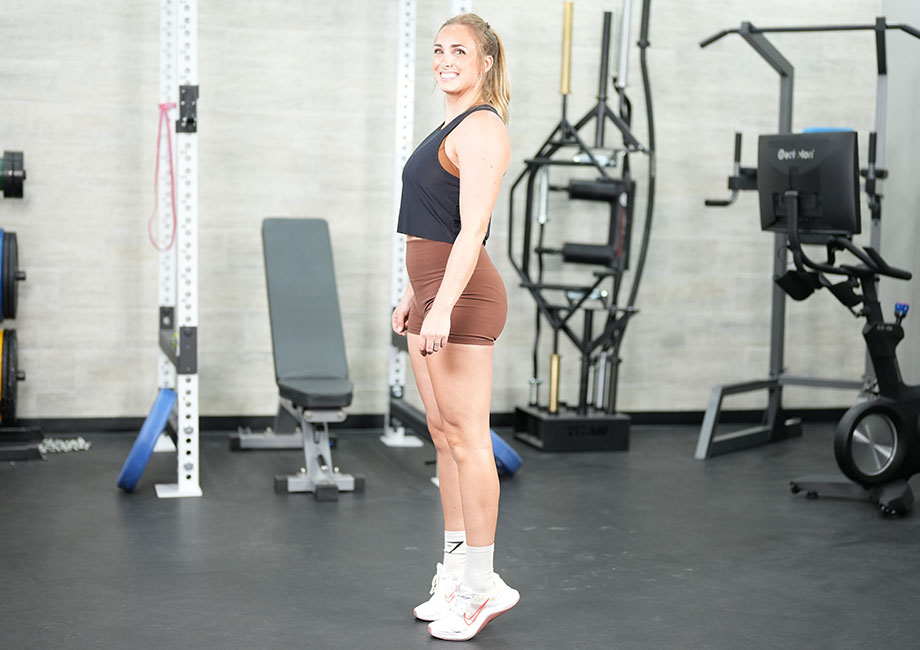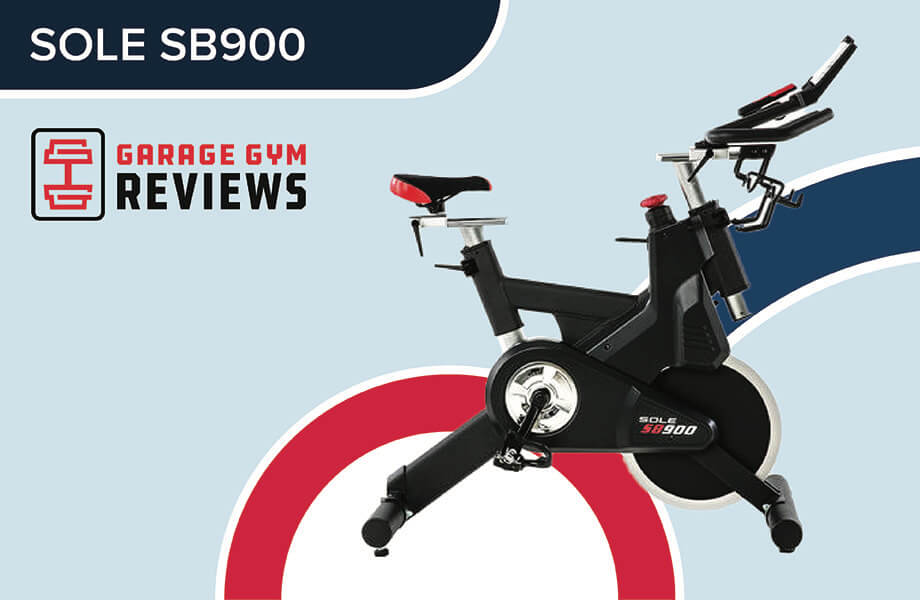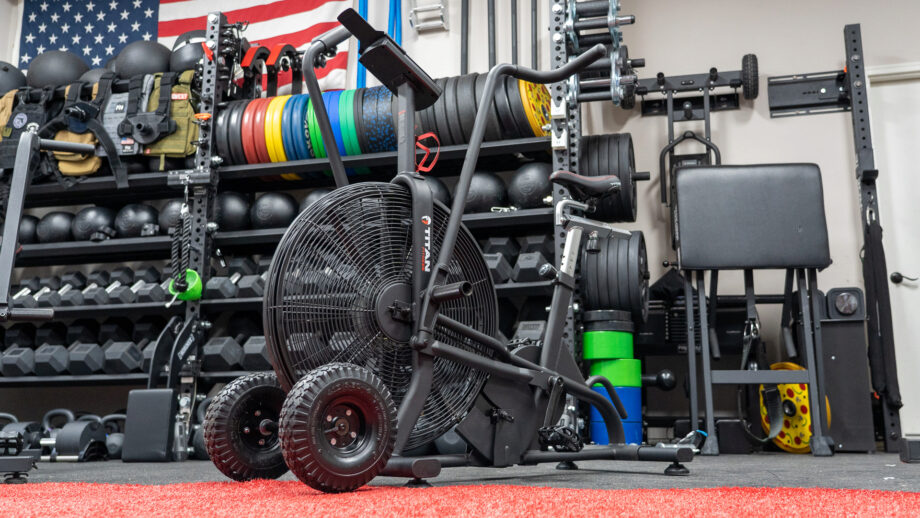The most common workout splits spend ample time on major muscle groups, including the chest, back, and leg muscles. Unfortunately, that leaves many vital muscles and body parts neglected, putting them at a greater risk of injury.
RELATED: Best Low-Impact Exercises
Ankle injuries are especially prevalent today. A 2019 study in the Journal of Athletic Training1 found acute ankle sprains among the most common musculoskeletal injuries, stating that approximately 70% of these injuries can lead to an ongoing physical disability for the individual. That’s why, as they say, an ounce of prevention is worth a pound of cure, and it’s well worth your while to work ankle stability exercises in your training routine.
“Balance exercises, ankle mobility exercises, and PT movements help reduce your risk of ankle injury,” says Amanda Capritto, CPT, CES, CNC, CF-L1, CSNC, and GGR Senior Staff Writer. “Using a stability or Bosu ball during your regular routine should help, too. While simple, stability balls are incredibly effective for building ankle strength and stability. I highly recommend them!”
RELATED: Stability Ball Exercises
Today, Amanda is sharing some of her favorite ankle strengthening exercises and movements that’ll help you stay injury-free for the long haul. Check them out below!
Anatomy of the Ankles
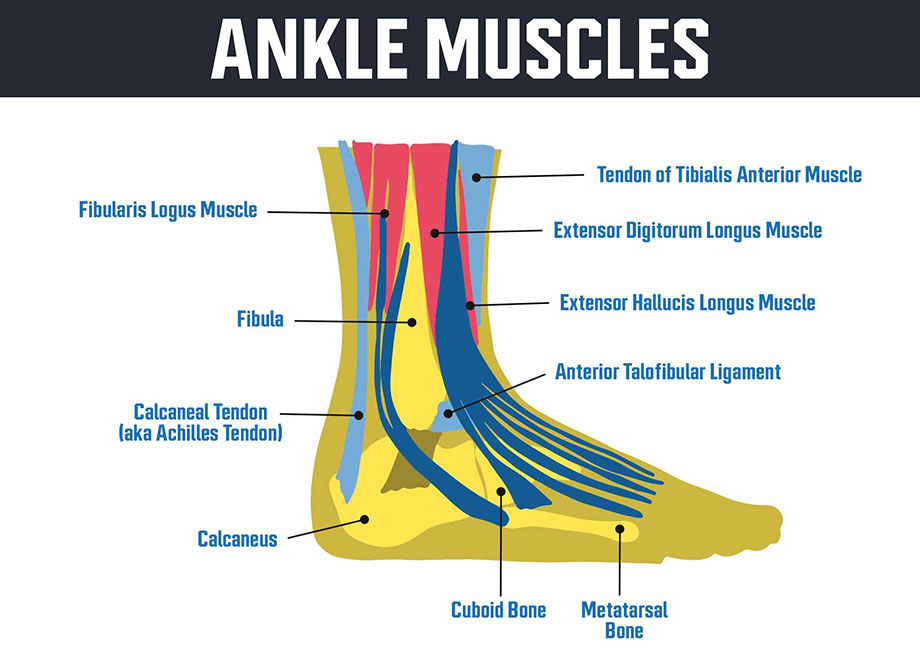
The ankle joint2 is “a hinged synovial joint” where the talus, tibia, and fibula bones meet or where your lower leg and foot meet. It serves as a site for cartilage, muscles, and various ligaments and tendons, including the ever-important Achilles tendon, which all contribute to ensuring the ankle is capable of supporting ambulation or walking without assistance.
A healthy ankle is capable of the following movements:
- Plantarflexion: Foot moves down and away from the body
- Dorsiflexion: Foot moves up towards the shin
- Inversion: Foot moves sideways towards the body’s midline
- Eversion: Foot moves sideways away from the midline
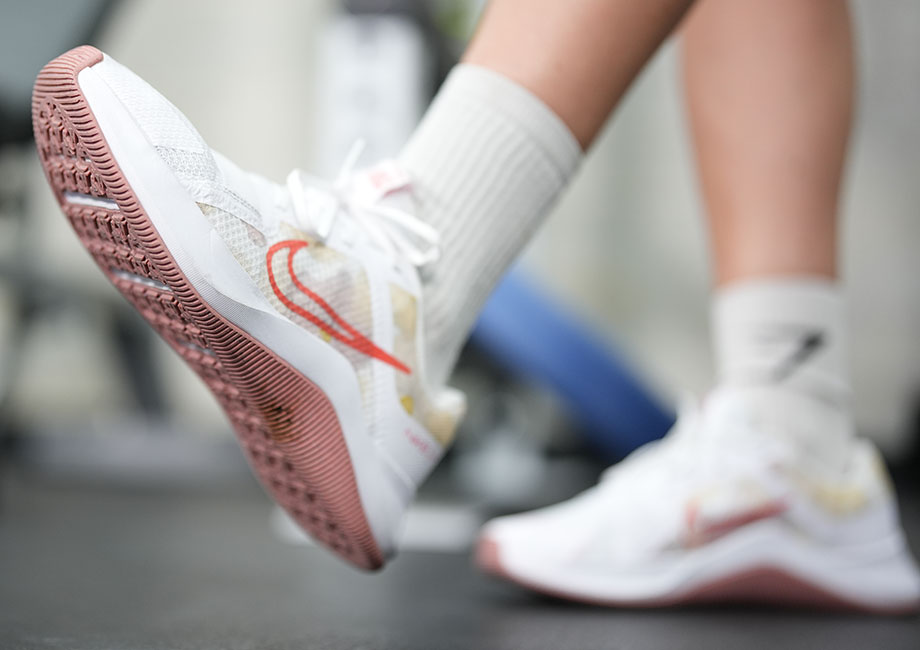
These movements are important for proper walking mechanics and balance, as an ankle that has difficulty performing one of the above movements will contribute to ankle pain and other complications.
What Causes Weak Ankles?
There are many reasons why someone might have weak ankles.
Genetics
Most people know at least one person who, no matter what they eat and how infrequently they exercise, they get to have bulging biceps, a flat stomach, or some other enviable physical attribute. It’s maddening, isn’t it?
Ankles are the same way. Some people are just born with weaker ankles than others.
Injury or Trauma
On the other hand, some people have otherwise strong ankles until a sports injury, misstep, or some other event that leads to trauma or injury of the ankle joint. These might include sprained ankles, strains, fractures, and dislocation.
“Working closely with a physical therapist and/or certified personal trainer is very important when rehabbing an ankle injury,” says Amanda Capritto, CPT, CES, CNC, CF-L1. “Their professional insight will be your best bet at making a full recovery and regaining full function of the ankle joint moving forward.”
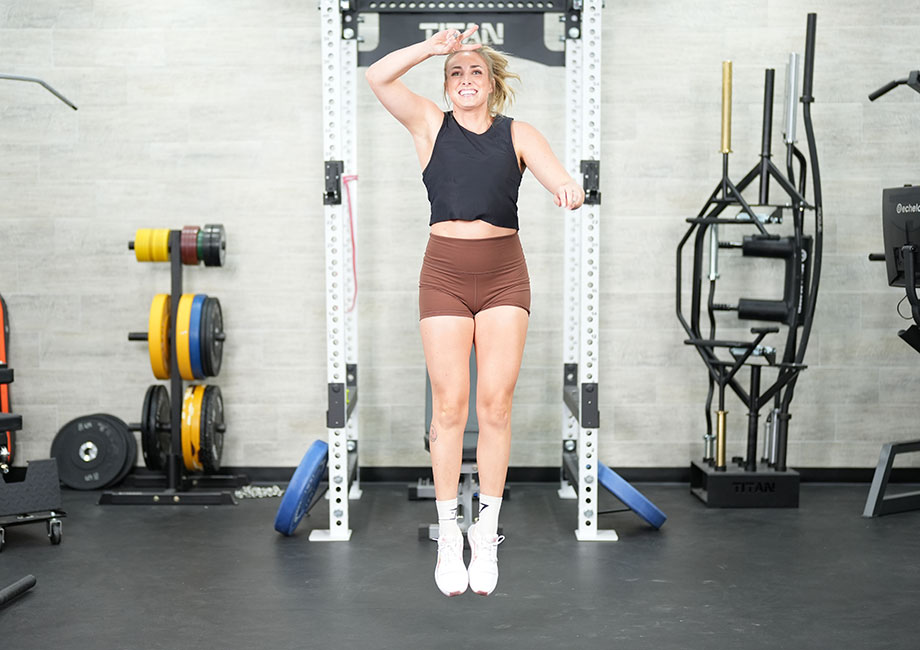
Chronic Ankle Instability
According to a 2016 study in Avicenna Journal of Medicine3, approximately 20% of acute ankle sprains and other injuries lead to a condition known as chronic ankle instability (CAI), which is categorized by weakness of the outer ankle and a propensity for the ankle to buckle during normal use.
CAI causes ankle pain, swelling, and reduced balance. Most cases can be effectively treated using a combination of physical therapy, medication, and bracing, but surgery may be required to relieve the most extreme cases of CAI.
Other Medical Conditions
There are many medical conditions that could account for weaker ankles, including:
- Diabetes
- Osteoarthritis
- Posterior tibial tendon dysfunction
If you have been diagnosed with one of these conditions and/or suspect you have weak ankles as a result of these conditions, consult your doctor or other qualified medical professional to receive your best treatment options.
Improper Footwear
A 2020 study in PLoS One4 found that individuals with CAI who wore minimalist shoes experienced an improvement in gait mechanics, giving credence to the theory that the right shoe could make a big difference on your physical abilities.
If you have not been diagnosed with a condition that might explain your apparent ankle instability, and you have already implemented ankle strengthening exercises, consider trying a different shoe to see if that improves things. It might just do the trick!
RELATED: Best Cross-Training Shoes
Benefits of Ankle Stability Exercises
Ankle injuries are among the most common injuries for athletes and older adults, making ankle strengthening and stability exercises an important part of a prevention program.
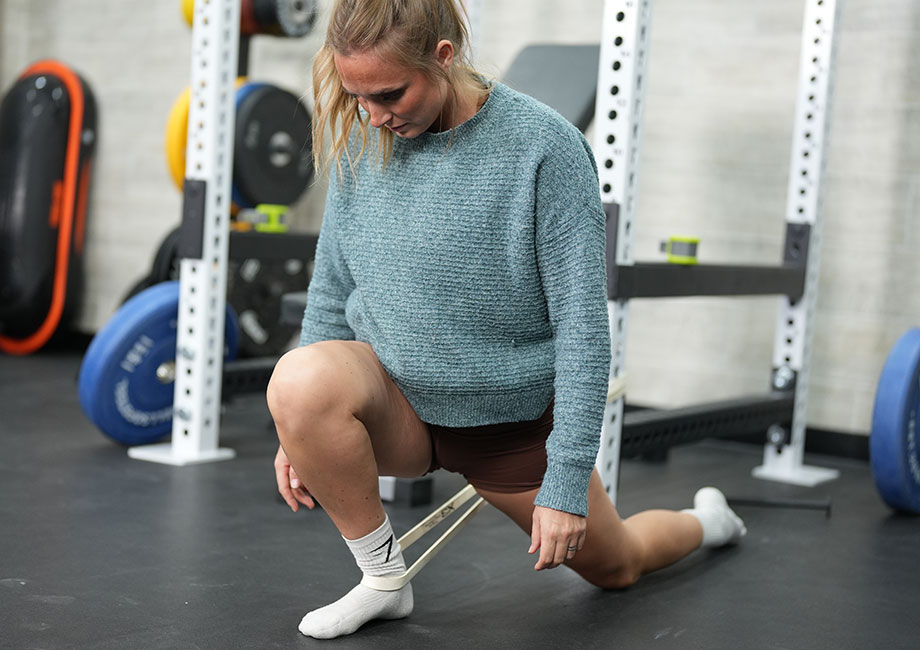
A 2018 study in the Journal of Exercise Rehabilitation5 found that “ankle strengthening exercise … [is] an effective treatment method for enhancing the proprioceptive sense and balance ability in adults with functional ankle instability.”
Balance exercises are also important for building ankle mobility and stability. A study in Medicine and Science in Sports and Exercise6 found that balance training improved function and postural control in patients with chronic ankle instability.
Not only do ankle strengthening exercises help prevent ankle injuries, they also may improve your sports performance. A 2022 study in the Journal of Sports Medicine and Physical Fitness7 found that “ankle isokinetic strength training… improves performance” and “will prevent the re-injury of ankles.”
Best Ankle Stability Exercises
Now that we’ve established why ankle stability exercises are important for your overall fitness, here are some exercises and movements designed to improve ankle strength and stability.
Ankle Dorsiflexion
Why do it: There are a few methods for improving your ankle dorsiflexion, but for our purposes we recommend performing the half-kneeling resistance band variation. “Stretching exercises using a resistance band helps build ankle strength and stability,” says Amanda Capritto, CPT, CES, CNC, CF-L1. “Move slowly through the range of motion to avoid pulling a muscle.”
How to do it:
- Begin by wrapping one end of a resistance band around a squat rack or sturdy surface and the other end around your front ankle as you assume a hip flexor stretch position.
- Slowly lean forward into the stretch with your foot remaining firm against the ground and your knee continuing forward until you complete the full range of motion.
- Hold briefly, then slowly bring your knee back to a neutral position.
- Complete all reps, then switch legs and repeat the set.
RELATED: Best Resistance Bands
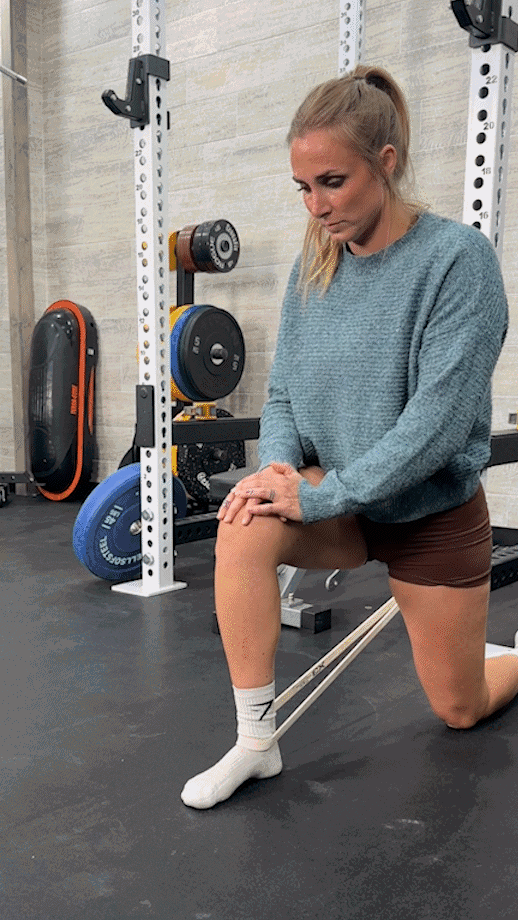
Plantar Flexion
Why do it: Just as reps of your natural ankle dorsiflexion movement against resistance will improve ankle strength, stability, and mobility, the same is true regarding plantar flexion. You can also perform this movement with a band for added resistance.
How to do it:
- Slowly flex your foot towards the body; if using a band, fight against the resistance of the band.
- Complete the range of motion, hold the end position briefly, then slowly return to the starting position.
- Complete all reps, then switch legs and repeat the set.
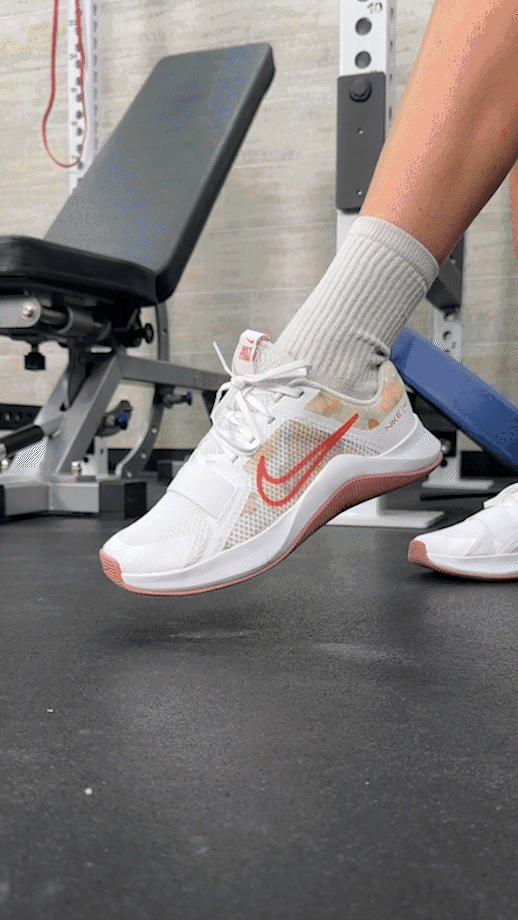
Single-Leg Balance (Single-Leg Stand)
Why do it: A 2022 review in Perceptual and Motor Skills8 determined that the single-leg balance “promotes significant increments in balance control” due to muscle activation in your lower body. Additionally, a 2021 study in Gait & Posture9 found that using a balance board for this exercise significantly increased that muscle activation, making it a great progression for this exercise.
How to do it:
- Stand with your feet shoulder-width apart.
- Lift one foot off the floor and hold for the desired duration.
- Place your lifted foot down when finished, then repeat for your other leg.
RELATED: Best Balance Boards
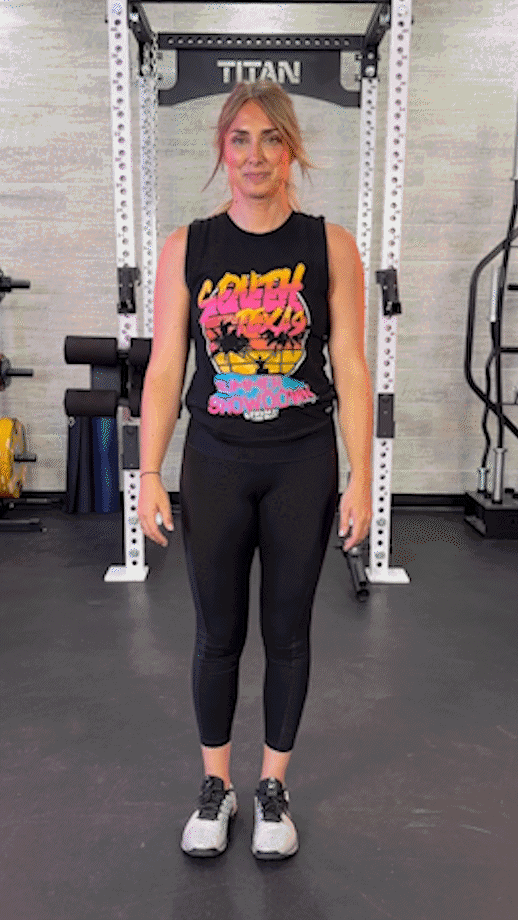
Heel-to-Toe Walking
Why do it: Heel-to-toe walking is the technical term for what the police would ask you to do during a field sobriety test. Walking while keeping your feet so close together creates instability, requiring ankle mobility, balance, and stabilizing muscles to avoid falling down.
How to do it:
- Walk in a straight line, making sure to touch the heel of your stepping foot to the big toe of your weight-bearing foot each time. Your eyes should be forward, your back straight, and arms extended out to the sides for balance, if necessary.
- Walk for the desired distance or duration, then rest.
RELATED: Balance Exercises
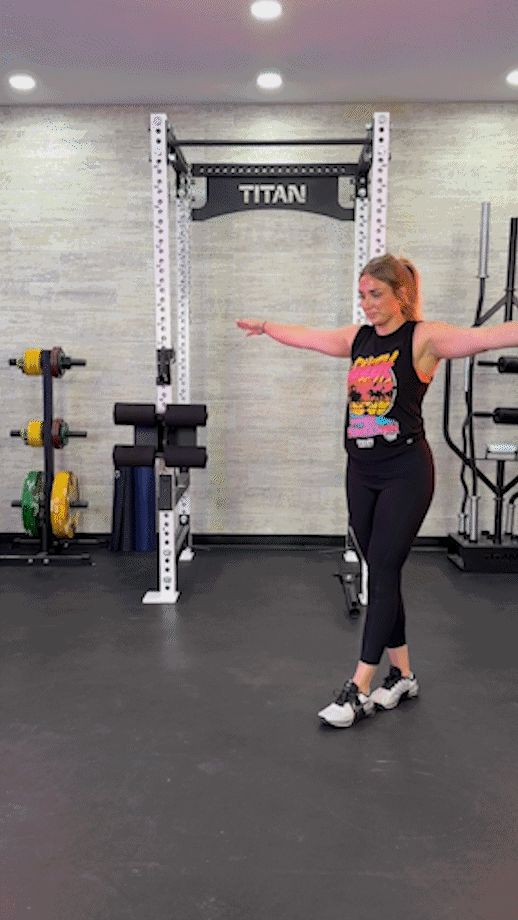
Lateral Hops
Why do it: “Lateral hops help strengthen the ankle muscles, reducing your risk of ankle injuries like sprains and strains,” says Amanda. “They also improve agility, balance, and coordination.”
How to do it:
- Stand with your feet shoulder-width apart and posture neutral.
- Slightly bend your knees, brace your core, and begin hopping from one side to the other, back and forth, landing on the balls of your feet.
- Complete the desired number of repetitions, then rest.
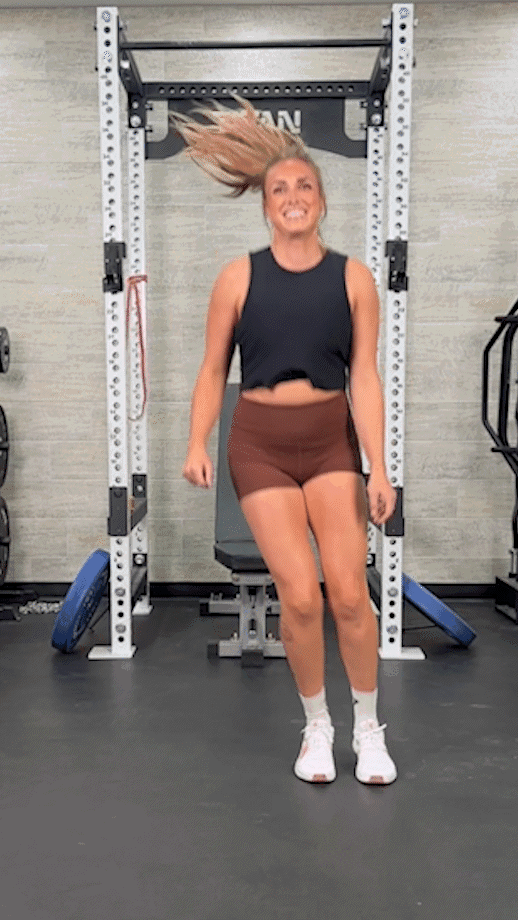
Standing Heel Raises
Why do it: Standing heel raises, also called bodyweight calf raises, are considered chief among calf exercises and are excellent at targeting the often-overlooked calf muscles, which, according to the Scottish journal The Foot10, increases ankle joint dorsiflexion.
How to do it:
- Stand with your feet shoulder-width apart, posture neutral, and core tight.
- Slowly come up onto your tiptoes, contracting the calf muscles as you rise.
- Hold the position, then slowly return to the floor.
- To make the exercise easier, hold the back of a chair to steady yourself. To make it harder, stand on a weight plate or step platform to create an increased range of motion.
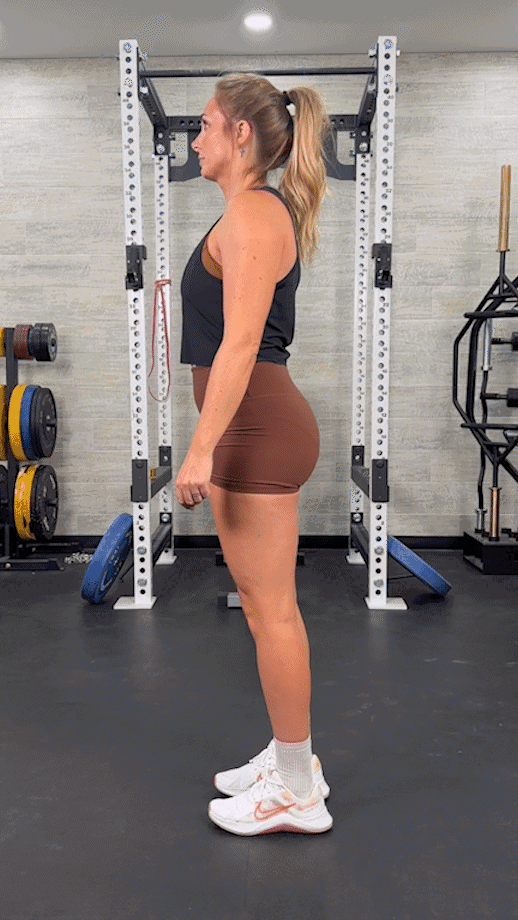
Walking Lunges
Why do it: “Walking lunges are an excellent exercise for targeting your glutes, quads, and hamstrings, but they also improve ankle strength and stability,” says Amanda. “You’ll need strong ankles to fight against the wobbles as you take each step.
How to do it:
- From a standing position, step forward with your right foot and lean into it.
- As you shift your weight forward, your right and left knees will both begin to form 90-degree angles. Once they’re at 90 degrees, hold the position.
- Drive your right foot through the floor and bring your left foot forward into a lunge.
- Repeat the movement with forward momentum, alternating sides, until you’ve completed the desired distance or number of repetitions.
RELATED: What Muscles Do Lunges Work?
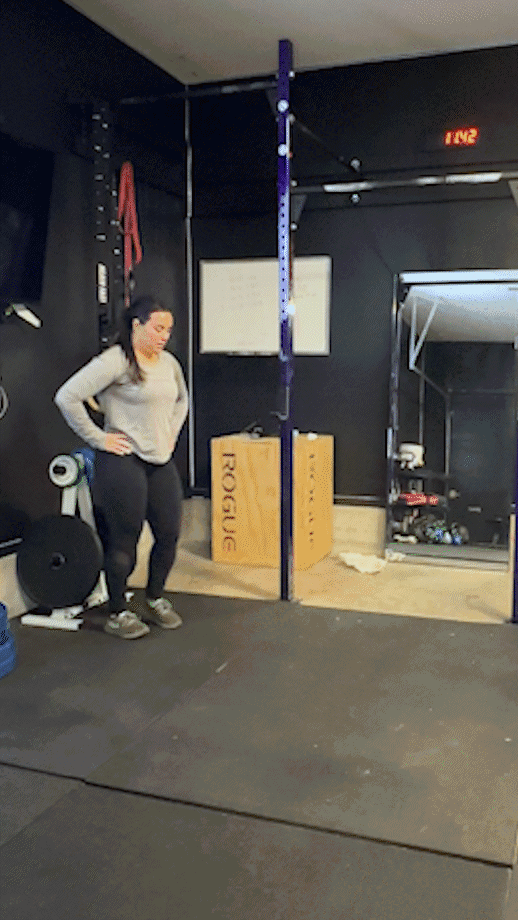
Single-Leg Romanian Deadlift
Why do it: The single-leg Romanian deadlift offers great muscle activation of the lower body muscles, and performing the exercise unilaterally places an increased demand on the hips, knees, and ankle, helping improve the strength and stability of these crucial joints.
How to do it:
- Stand with feet hip-width apart. If using a barbell or kettlebell, hold it in front of the body. If using dumbbells, hold them at your sides. You may also perform this movement with your bodyweight only.
- Bring your hips back and chest down toward the floor, lifting your other leg into the air behind you as you descend. Maintain a slight bend in the knee from start to finish.
- Continue descending until you feel a stretch in your hamstring, then drive through the heel and return to the starting position.
- Complete all reps, then switch sides and repeat the set.
RELATED: RDL Workout
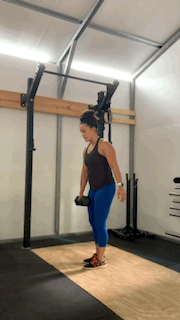
Ankle Stability Exercises: Final Thoughts
Most fitness enthusiasts already have a favorite routine for hitting the major muscle groups, but ankle stability exercises are often overlooked and equally important.
Ankle strength, stability, and mobility help protect you from various ankle injuries, simultaneously providing enhanced sports performance, improved balance, and greater proprioception (or your innate sense of movement and position).
Try adding some of our ankle stability exercises into your next workout!
Ankle Stability Exercises: FAQs
How can I improve my ankle stability?
Our ankle stability exercises will help improve ankle strength, stability, and mobility, but there are other things you can do to improve stability as well.
Rehabilitation exercises, like wrapping your foot with a resistance band and tracing the letters of the alphabet in the air, help engage the lower leg and ankle muscles, building strength and stability.
“Regular resistance training on unstable surfaces like a stability or Bosu ball also works well to challenge the ankle muscles,” says Amanda Capritto, CPT, CES, CNC, CF-L1, and GGR Senior Staff Writer. “Unstable surfaces increase lower-body muscle activation and ultimately result in greater strength and hypertrophy.”
What muscles help with ankle stability?
Your ankle muscles include the gastrocnemius, soleus, posterior tibialis, flexor hallucis longus, and peroneal longis and brevis. To target these muscles, try exercises like ankle dorsiflexion, plantar flexion, single-leg balance, and the single-leg Romanian deadlift.
Can you fix ankle instability?
Often, a combination of physical therapy, medication or injections, and bracing could reduce the effects of chronic ankle instability, but, in extreme cases, surgery is considered.
Consult your doctor or qualified medical professional if you are living with chronic ankle instability and would like to discuss your options.
What is the best exercise to strengthen your ankle?
There are many exercises that are good for strengthening the ankle. The exercises we chose to highlight—ankle dorsiflexion, plantar flexion, single-leg balance, heel-to-toe walks, heel raises, walking lunges, and single-leg Romanian deadlifts—involve balance and using your ankles natural range of motion with added resistance to encourage building strength, endurance, and hypertrophy.
References
1. Herzog MM, Kerr ZY, Marshall SW, Wikstrom EA. Epidemiology of Ankle Sprains and Chronic Ankle Instability. J Athl Train. 2019;54(6):603-610. doi:10.4085/1062-6050-447-17
2. Manganaro D, Alsayouri K. Anatomy, Bony Pelvis and Lower Limb: Ankle Joint. [Updated 2023 May 23]. In: StatPearls [Internet]. Treasure Island (FL): StatPearls Publishing; 2023 Jan
3. Al-Mohrej OA, Al-Kenani NS. Chronic ankle instability: Current perspectives. Avicenna J Med. 2016;6(4):103-108. doi:10.4103/2231-0770.191446
4. Moisan G, Descarreaux M, Cantin V. The influence of footwear on walking biomechanics in individuals with chronic ankle instability. PLoS One. 2020;15(9):e0239621. Published 2020 Sep 24. doi:10.1371/journal.pone.0239621
5. Ha SY, Han JH, Sung YH. Effects of ankle strengthening exercise program on an unstable supporting surface on proprioception and balance in adults with functional ankle instability. J Exerc Rehabil. 2018;14(2):301-305. Published 2018 Apr 26. doi:10.12965/jer.1836082.041
6. McKeon PO, Ingersoll CD, Kerrigan DC, Saliba E, Bennett BC, Hertel J. Balance training improves function and postural control in those with chronic ankle instability. Med Sci Sports Exerc. 2008;40(10):1810-1819. doi:10.1249/MSS.0b013e31817e0f92
7. Kalaycioglu T, Apostolopoulos NC, Yurt Y, Tunay VB. The effectiveness of different ankle strengthening training programs on performance. J Sports Med Phys Fitness. 2022;62(4):435-447. doi:10.23736/S0022-4707.21.12130-9
8. Marcori AJ, Monteiro PHM, Oliveira JA, Doumas M, Teixeira LA. Single Leg Balance Training: A Systematic Review. Percept Mot Skills. 2022;129(2):232-252. doi:10.1177/00315125211070104
9. Alfuth M, Ebert M, Klemp J, Knicker A. Biomechanical analysis of single-leg stance using a textured balance board compared to a smooth balance board and the floor: A cross-sectional study. Gait Posture. 2021;84:215-220. doi:10.1016/j.gaitpost.2020.12.014
10. Macklin K, Healy A, Chockalingam N. The effect of calf muscle stretching exercises on ankle joint dorsiflexion and dynamic foot pressures, force and related temporal parameters. Foot (Edinb). 2012;22(1):10-17. doi:10.1016/j.foot.2011.09.001


